Newsletter
Eat your way across L.A.
Get our weekly Tasting Notes newsletter for reviews, news and more.
You may occasionally receive promotional content from the Los Angeles Times.
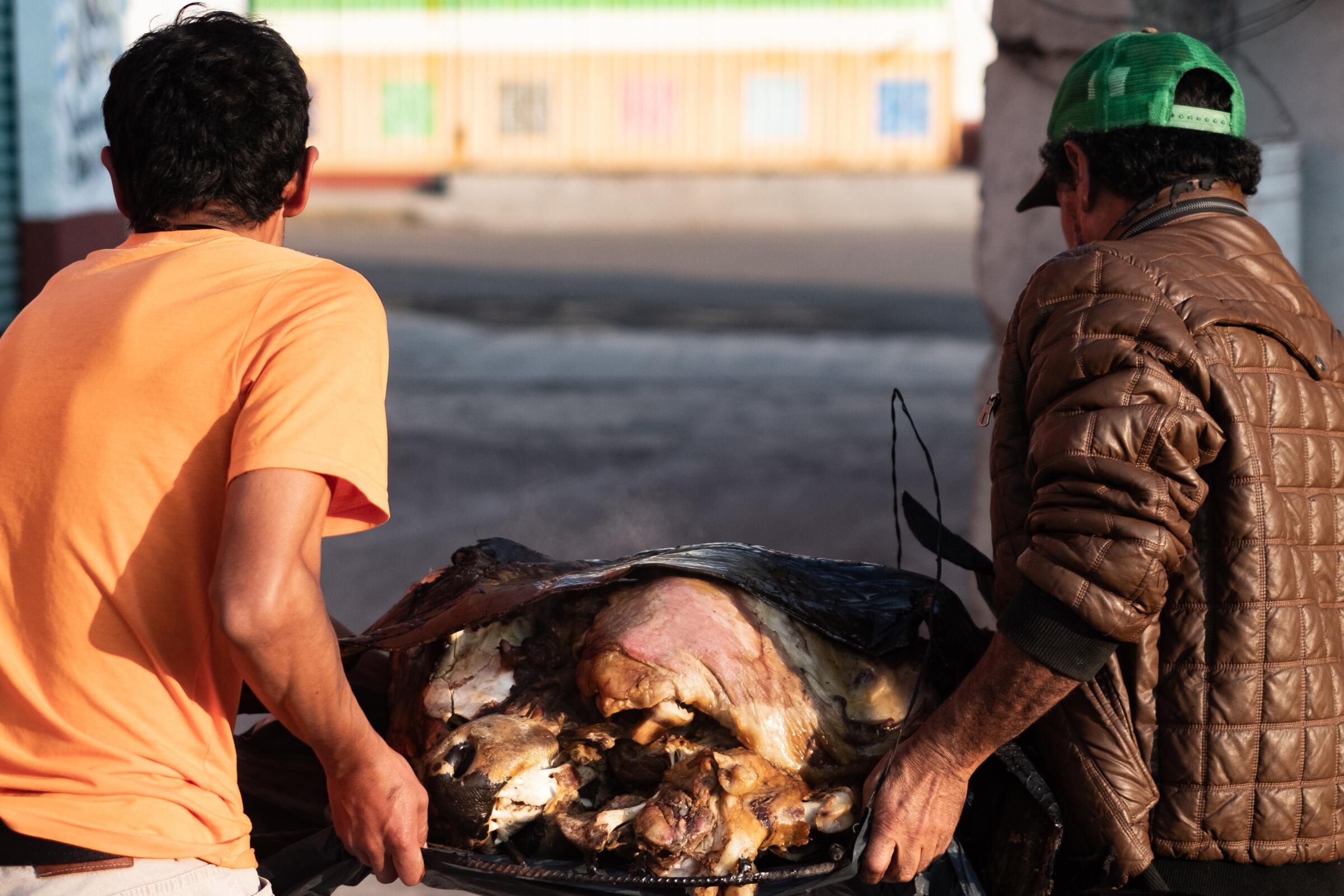
Pedro Sánchez and wife Julia de Jesús have been serving barbacoa at a roadside stand every Sunday morning for almost 20 years. They set up their stall in Mavoro, a small town two hours west of Mexico City.
There’s no official name, no marketing or Instagram account to find it through, and though only 1,600 people live in Mavoro, there’s always a group of hungry people — locals, taxi drivers and construction workers — assembled for the couple’s superlative, smoky, spoon-tender barbacoa.
Jesús Salas Tornés of Expendio de Maíz in Mexico City has translated the spontaneity and ordered chaos of a country kitchen to the city.
“They serve one of the best barbacoas around,” Alberto Marmolejo, a local resident, told me recently as we watched Sánchez, 56, chop the long-cooked goat into small pieces and tuck them in hot, just-made tortillas that De Jesús, also 56, had just pulled off the comal.
The recipe they follow was created by Sánchez’s grandfather almost 50 years ago and has never been modified; he is the third generation of his family to serve up Sunday morning barbacoa in Mavoro.
The process starts the day before, with the killing of the goat in the morning. It’s then butchered, wrapped in burned maguey pencas (agave leaves) and slowly cooked in a hoyo — a stone-lined, wood-fired pit — for 14 hours. On Sunday morning, the barbacoa comes out of the pit at 7:30 and is usually gone by 10:30.
In a special bonus episode of ‘Off Menu,’ Food columnist Lucas Kwan Peterson goes to Mexico City to sample a variety of Mexican food.
Then they pack up the stand and go back to their regular life: On weekdays, De Jesús dedicates her time mostly to taking care of their animals (horses, goats and chickens) and Sánchez works at a government outpost inspecting animals and agricultural products. Until Saturday morning rolls around again, and it’s time to make the barbacoa.
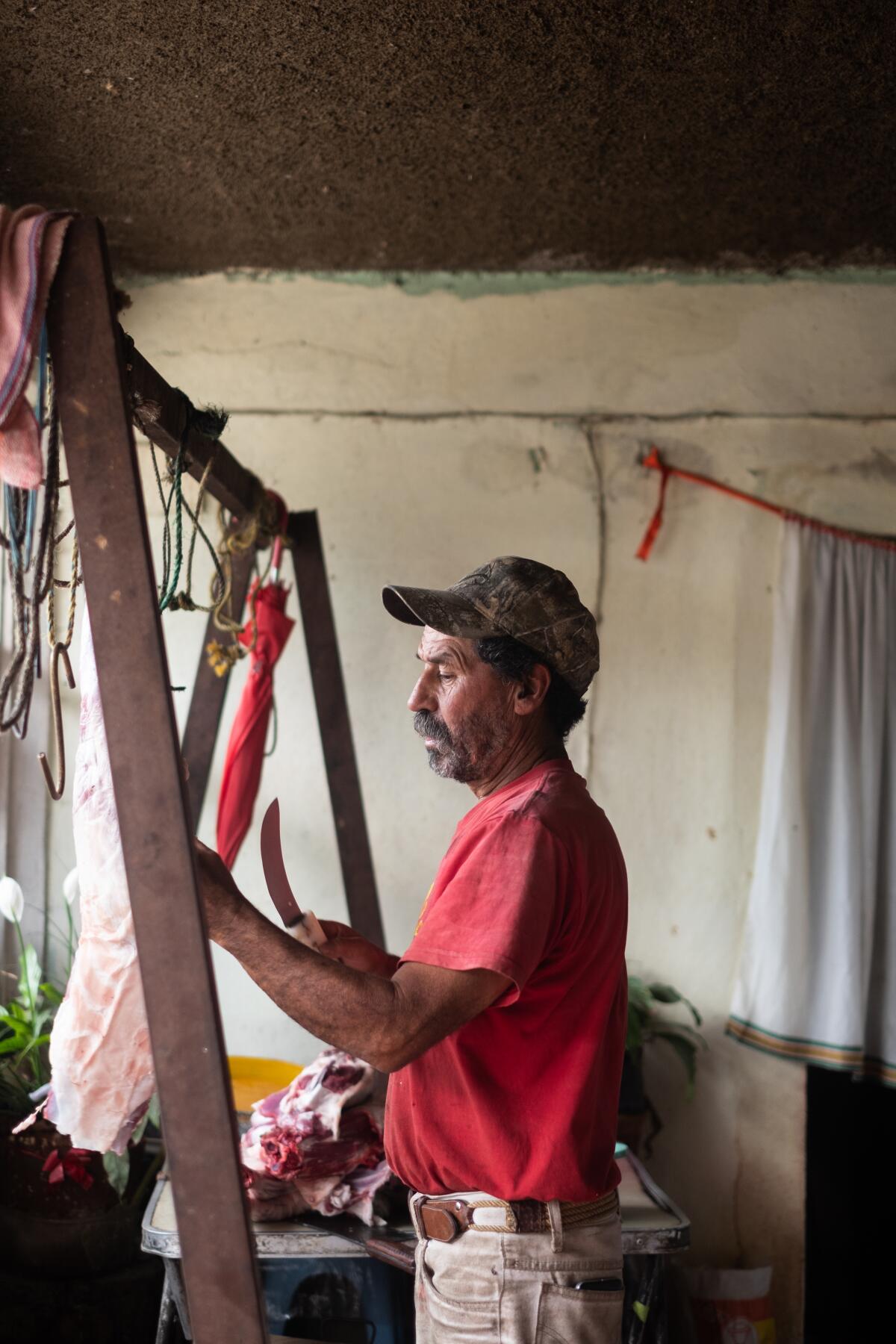
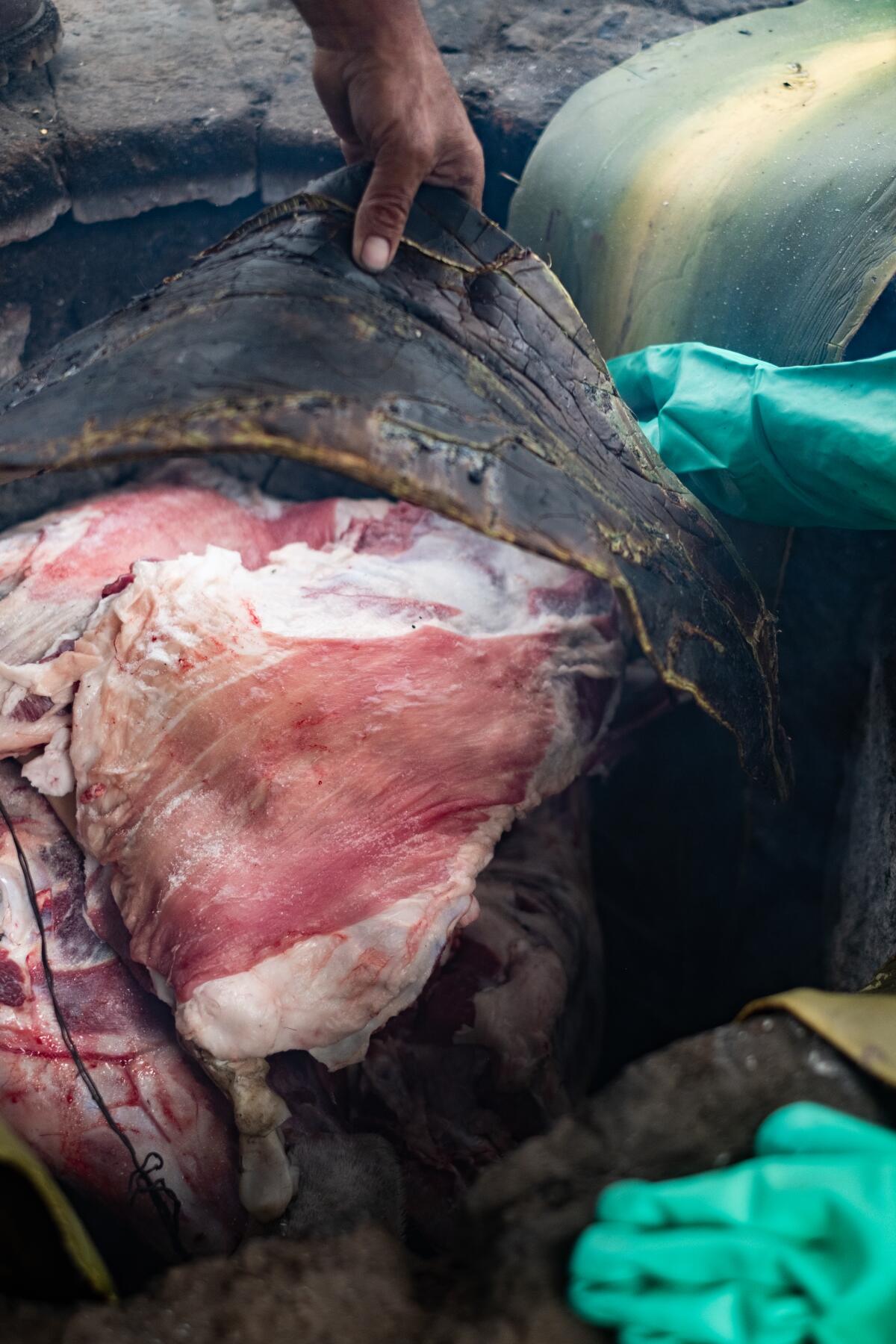
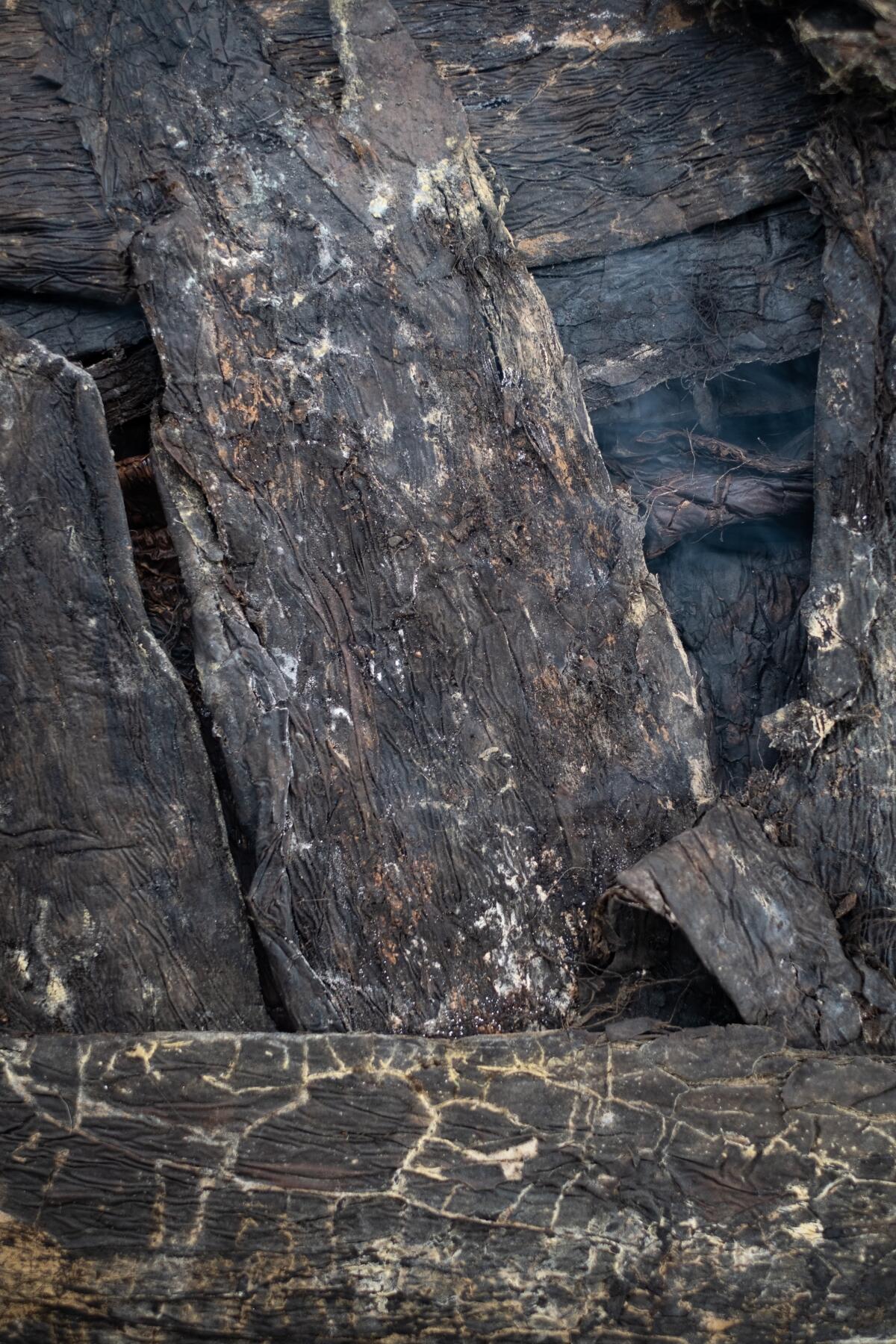
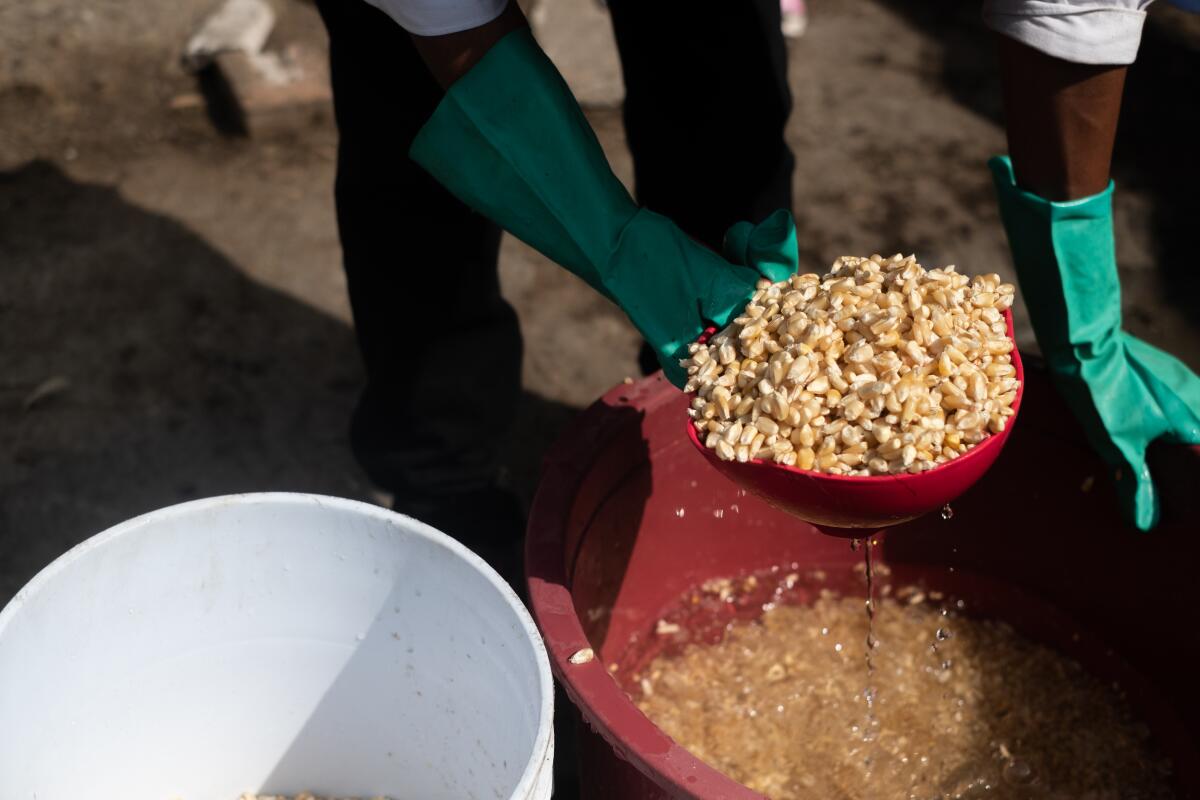
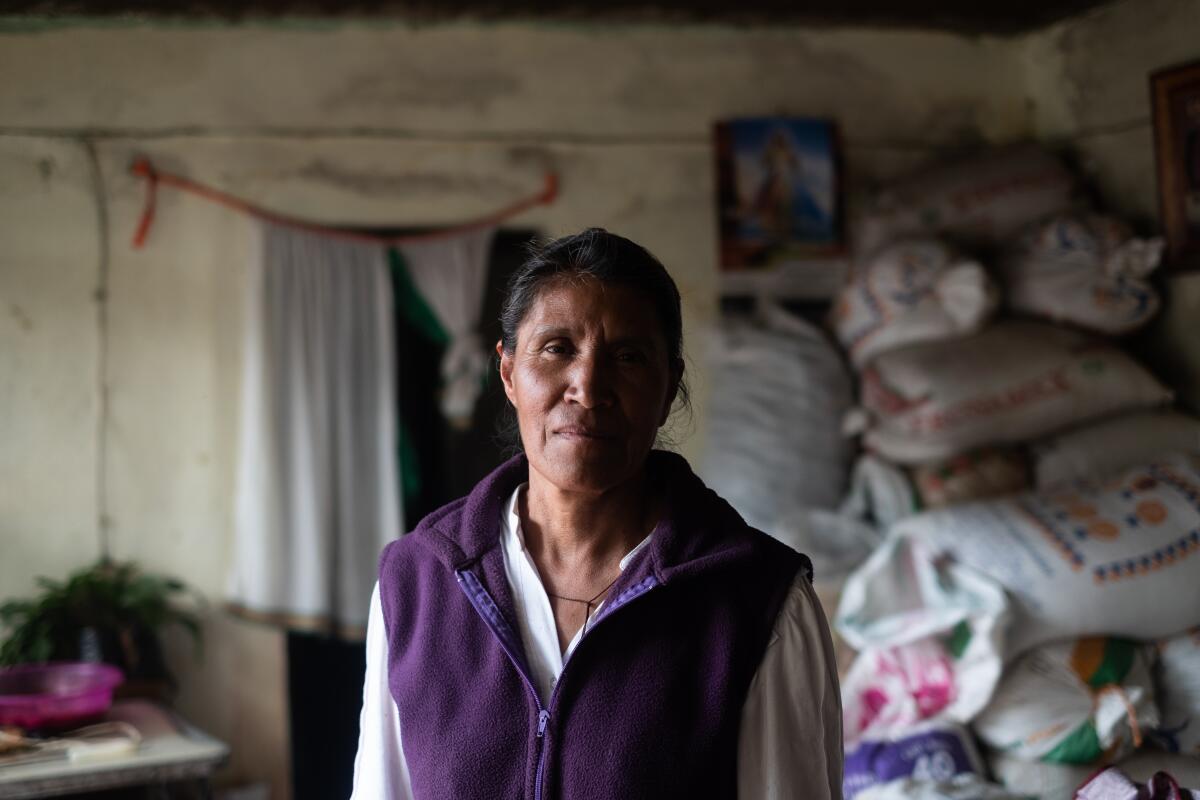
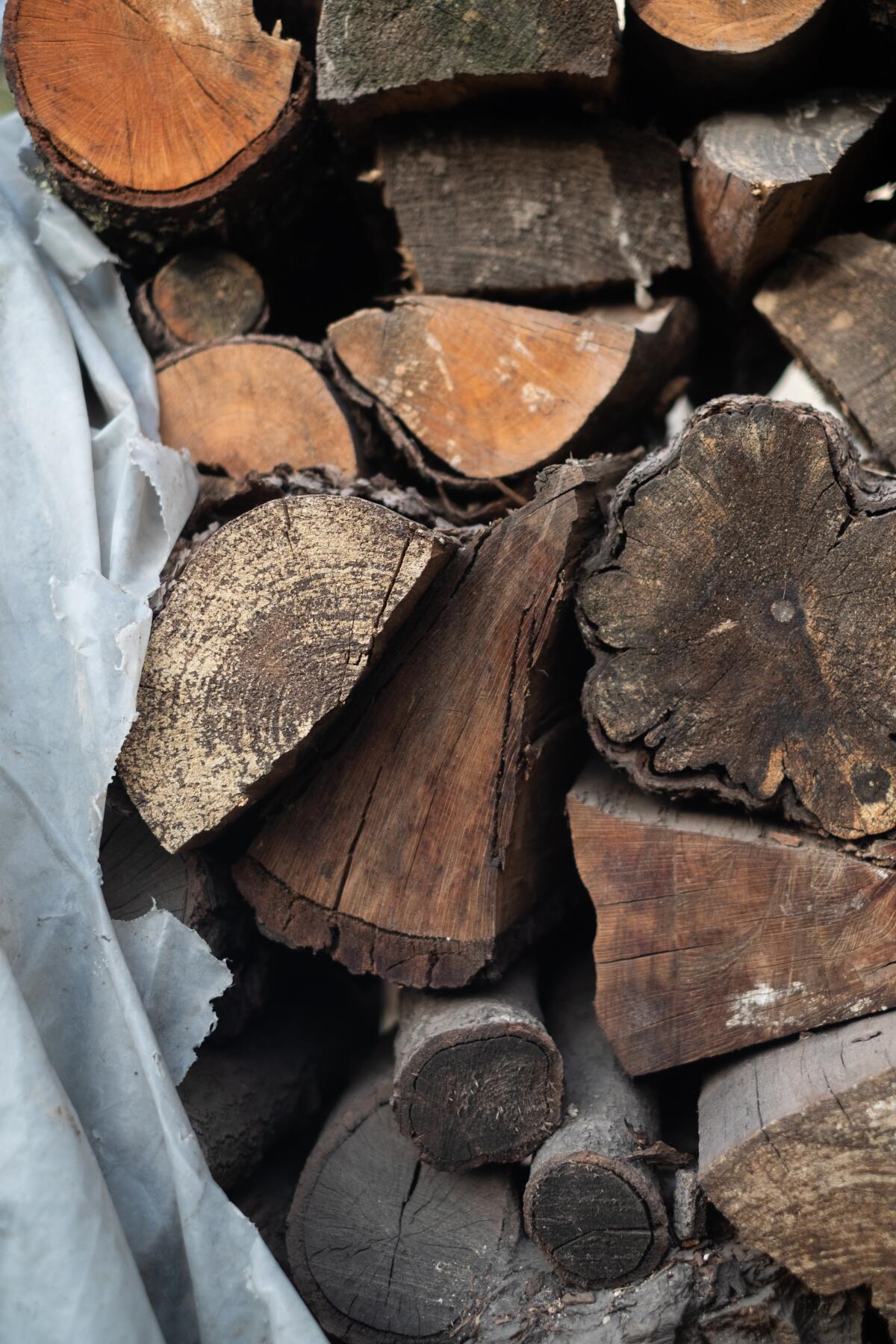
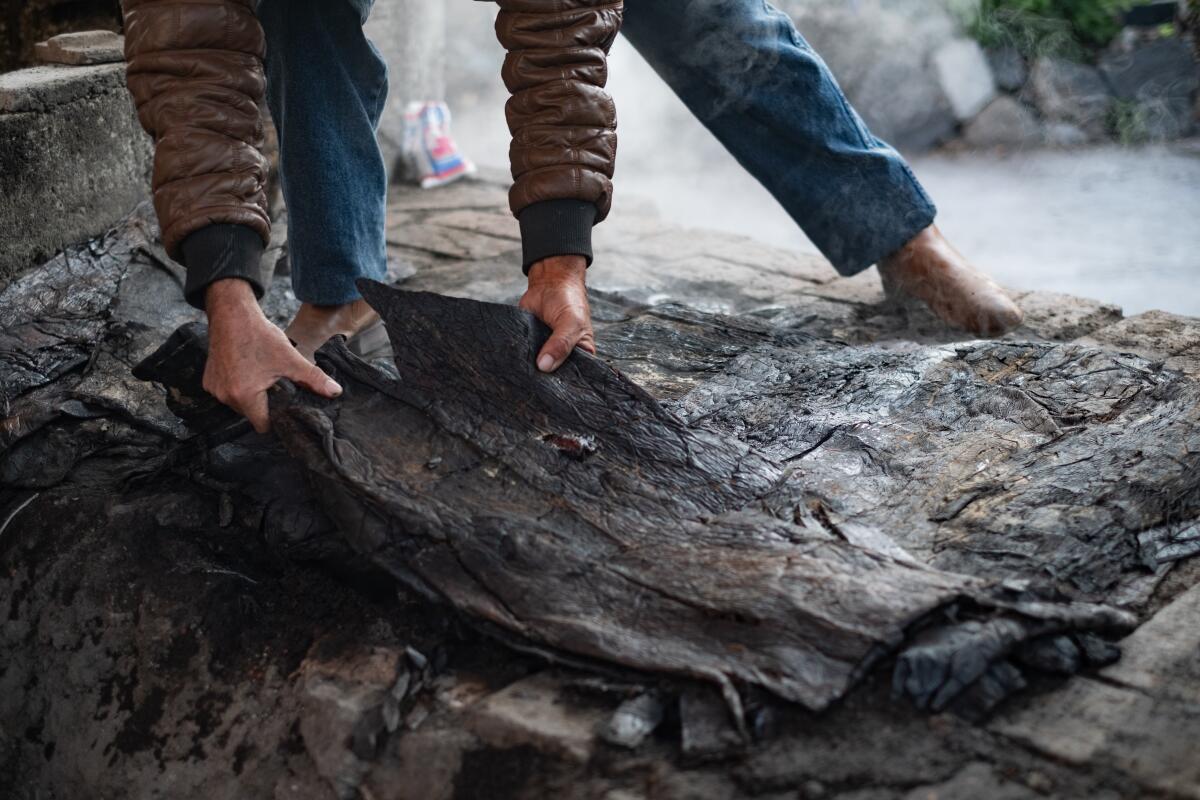
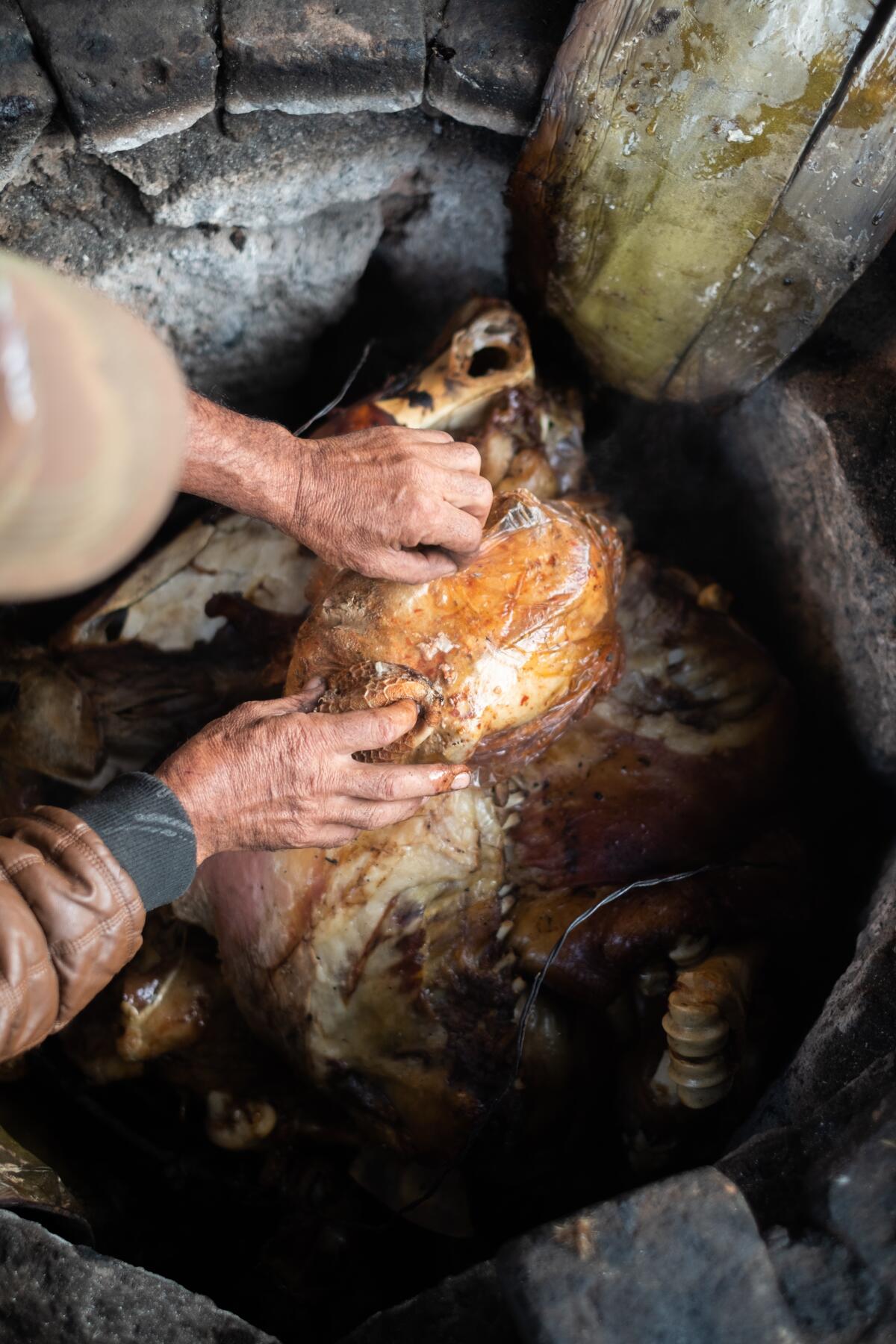
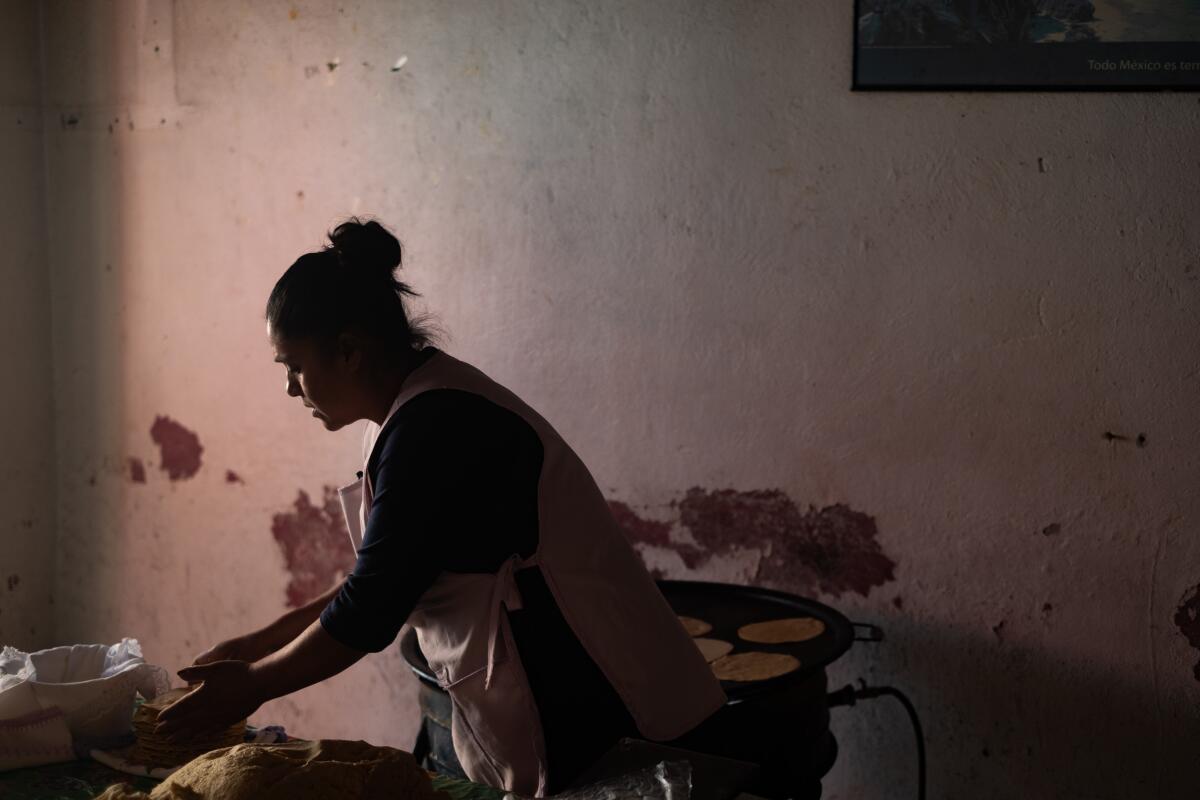
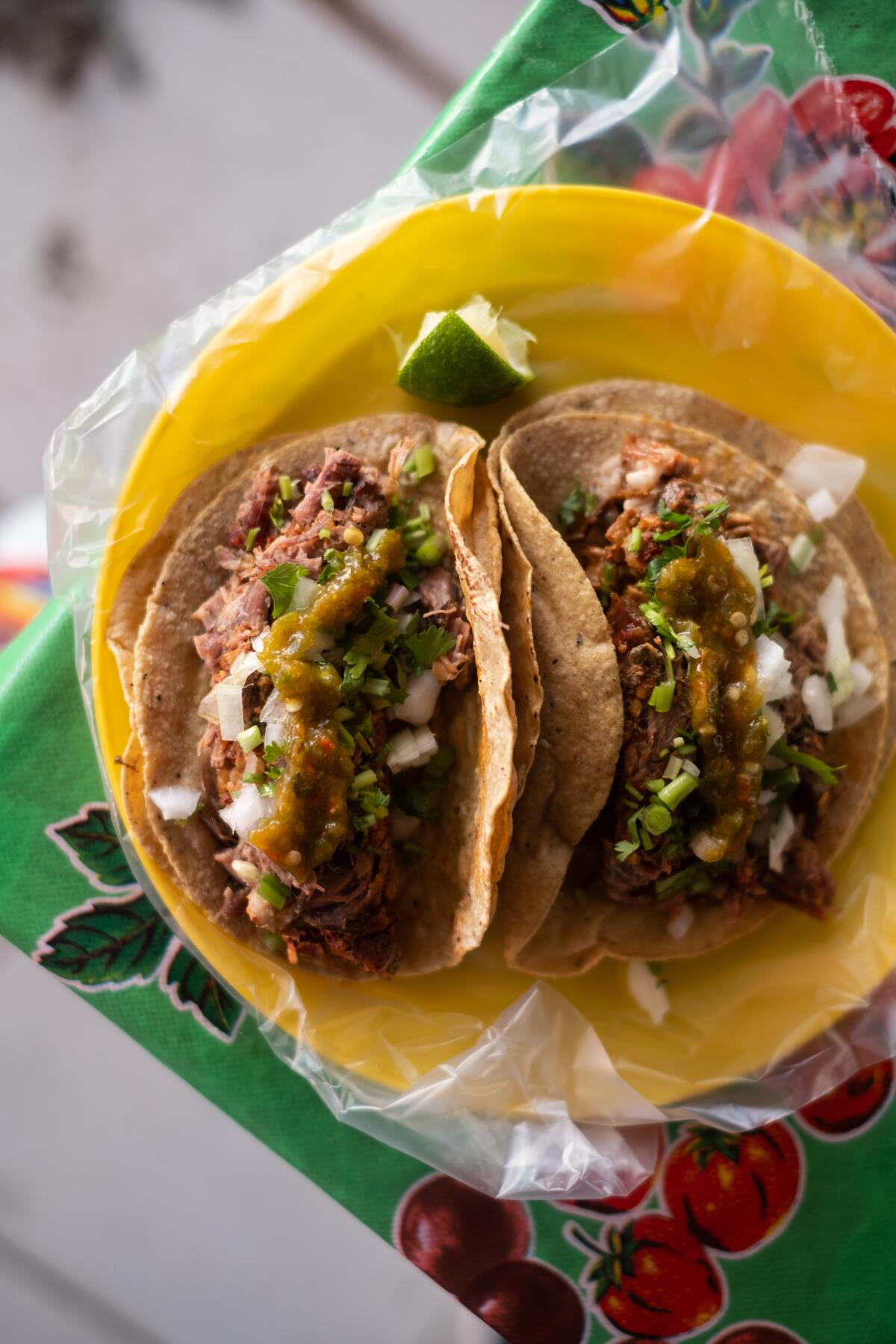
Eat your way across L.A.
Get our weekly Tasting Notes newsletter for reviews, news and more.
You may occasionally receive promotional content from the Los Angeles Times.